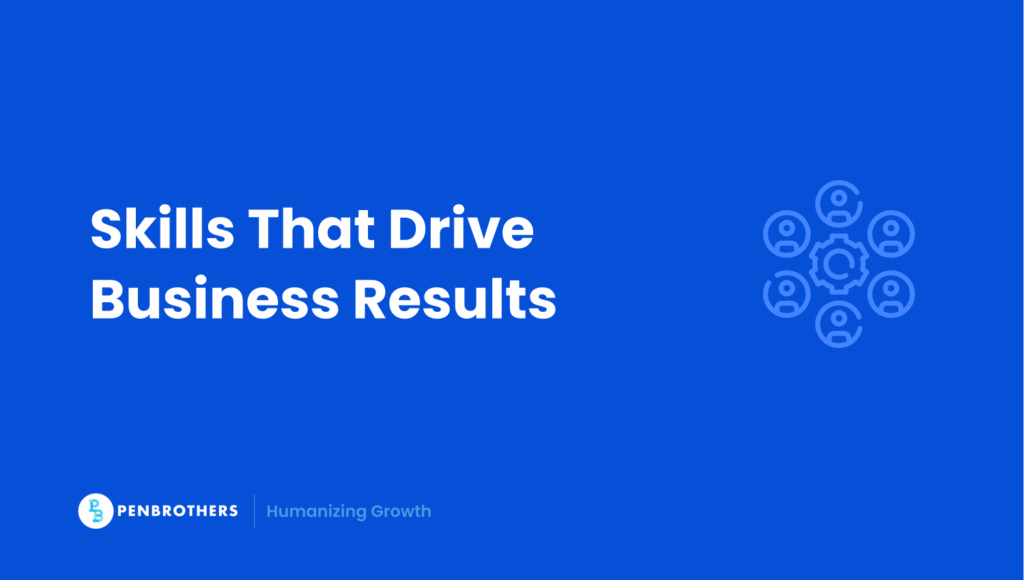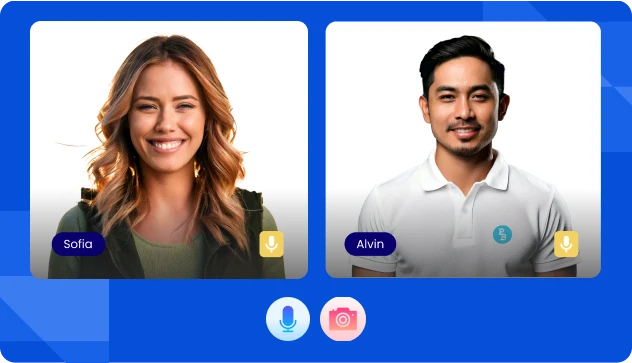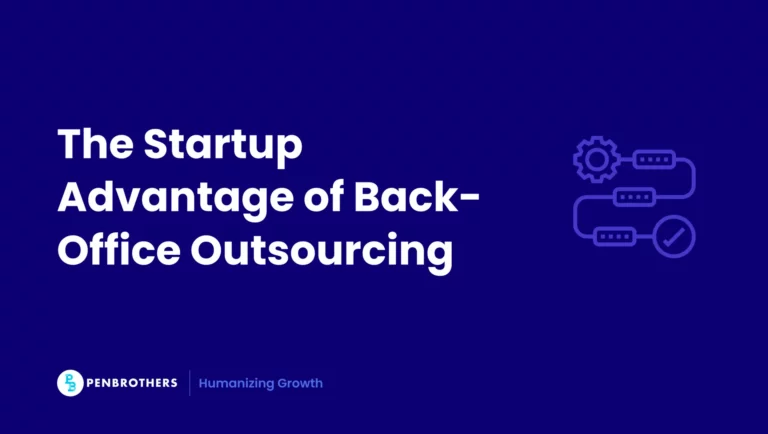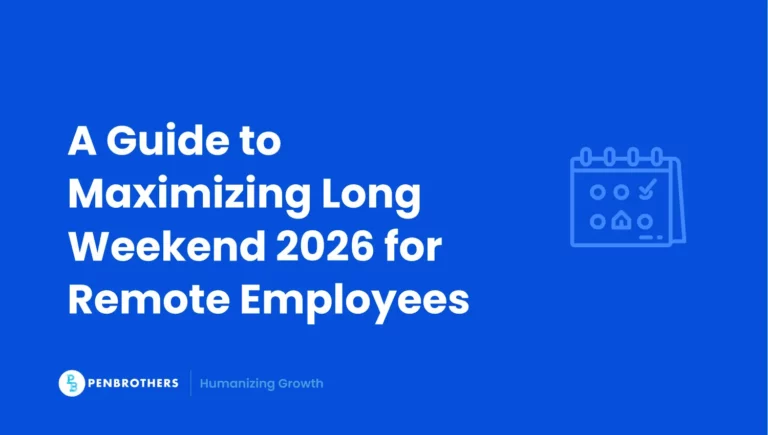Let’s face it—hiring great people isn’t enough anymore. Companies that scale sustainably are built on more than headcount. They’re built on competence. And not just technical know-how, but the kind of human-centered skills that fuel alignment, agility, and long-term success.
At Penbrothers, we work with startups and scaling companies worldwide to build full offshore teams in the Philippines. We see every day how companies with clearly defined core competencies outperform those that rely solely on job descriptions or experience alone.
What Are Core Competencies?
Core competencies are the essential, organization-wide skills, behaviors, and attributes that every team member should embody—regardless of function or title. Philip Kotler called them “the collective learning in the organization,” and for good reason. Core competencies drive the culture, performance, and growth of a business.
They differ from technical or functional competencies, which are role-specific. Core competencies underpin how teams communicate, solve problems, make decisions, and build relationships. They’re what give your company its competitive edge.
Why Do They Matter?
- Align your workforce with company values and strategy
- Improve hiring, training, and performance evaluations
- Enable scalable career pathing and succession planning
- Support global and cross-cultural team alignment
In the context of global teams, especially offshore setups, core competencies are the glue that holds operations together across time zones, languages, and business cultures. Discover key strategies to build strong offshore teams here.
According to the World Economic Forum’s Future of Jobs Report 2023, analytical thinking, resilience, and self-awareness are among the most in-demand core competencies identified by employers worldwide. These traits are projected to remain critical through 2027 as workplaces become more digitally connected and globally distributed.
Must-Have Core Competencies to Strengthen Your Workforce
We’ve grouped the following core competencies into four capability clusters. These are observable, trainable, and applicable across diverse business environments, including remote and offshore teams.
Communication & Collaboration
- Communication – Effectively communicates information in a clear, concise, and audience-appropriate manner. Adjusts tone, language, and delivery style depending on the stakeholder group, ensuring messages are easily understood. Actively listens and confirms understanding to prevent miscommunication.
- Teamwork – Collaborates openly with colleagues, valuing diverse perspectives and contributions to achieve common objectives. Actively supports team efforts, shares knowledge, and steps in when needed. Demonstrates reliability and mutual accountability in team settings.
- Interpersonal Skills – Develops and maintains strong, professional relationships grounded in trust, mutual respect, and open communication. Navigates different personalities and work styles with diplomacy and emotional intelligence. Contributes to a positive team culture by fostering inclusivity and cooperation.
- Persuasiveness – Effectively presents ideas and proposals in a compelling way that encourages buy-in from others. Uses logic, storytelling, and understanding of audience motivations to influence decision-making. Can rally support even in situations of initial skepticism or resistance..
- Empathy – Actively seeks to understand the thoughts, feelings, and challenges of others, whether customers or colleagues. Responds with compassion and appropriate support, creating a safe and inclusive environment. This sensitivity strengthens collaboration and customer relationships.
Critical Thinking & Decision Making
- Problem-Solving –Approaches challenges by identifying the root cause rather than just addressing symptoms. Evaluates options systematically and applies logical thinking to develop effective, sustainable solutions. Demonstrates resourcefulness and adaptability in complex or unexpected situations.
- Analytical Thinking – Breaks down complex data and information to uncover patterns, trends, and insights. Uses critical analysis to support recommendations and guide strategic choices. Balances quantitative evidence with contextual understanding to form a complete picture.
- Decision-Making – Evaluates available information, risks, and potential outcomes before committing to a course of action. Makes timely, informed decisions—even under pressure—by relying on logic, data, and experience. Owns the impact of decisions and is willing to adjust when new information arises.
- Results Orientation – Focuses efforts on achieving measurable, high-impact outcomes that align with organizational goals. Maintains momentum and accountability, even in the face of setbacks or shifting priorities. Balances quality and speed to deliver consistent results.
The McKinsey Global Institute’s report, Skill Shift: Automation and the Future of the Workforce, highlights that demand for higher cognitive skills—such as creativity, critical thinking, decision-making, and complex information processing—is expected to grow through 2030. This underscores the need for organizations to invest in developing these competencies to remain competitive in an increasingly automated and digital world
Personal Effectiveness
- Time Management – Effectively prioritizes tasks based on urgency and importance, ensuring deadlines are consistently met without compromising quality. Uses tools and strategies to stay organized and focused throughout the workday. Demonstrates accountability by managing competing demands with clarity and efficiency.
- Resilience – Maintains composure and productivity in the face of stress, setbacks, or change. Reframes challenges as opportunities for growth and maintains a forward-looking mindset. Demonstrates emotional strength and persistence even when outcomes are uncertain.
- Willingness to Learn – Shows a proactive attitude toward personal and professional development by seeking out feedback, mentorship, and new experiences. Treats mistakes as learning moments and is open to evolving practices and perspectives. Keeps skills current through continuous learning and curiosity.
- Embracing Change – Adjusts quickly and effectively to shifting priorities, new technologies, or evolving team dynamics. Remains flexible and solutions-focused, contributing positively even in ambiguous or uncertain situations. Encourages others to see change as an opportunity rather than a disruption..
According to LinkedIn Learning’s 2023 Workplace Learning Report, 89% of L&D professionals say proactively building employee skills (including adaptability and continuous learning) is critical for navigating change and future disruptions.
Leadership & Influence
- Leadership – Inspires and guides individuals or teams toward a clear, shared vision by setting direction and leading by example. Empowers others through trust, delegation, and consistent support. Demonstrates accountability and encourages a culture of ownership and continuous improvement.
- Building Work Relationships – Develops productive, trust-based relationships across teams, hierarchies, and cultural boundaries. Communicates openly and respectfully, fostering collaboration and shared problem-solving. Strengthens team dynamics by promoting inclusion, mutual respect, and alignment across functions.
- Customer Satisfaction – Proactively understands customer needs and expectations to deliver solutions that create value and loyalty. Continuously looks for ways to improve service delivery, communication, and responsiveness. Turns customer feedback into actionable improvements that drive long-term satisfaction and trust.
The Deloitte report titled The High-Impact HR Operating Model discusses how organizations that implement high-impact HR practices, which include robust leadership development and competency frameworks, can achieve up to 2.4 times higher business outcomes compared to their peers.
Pro Tip: Map these competencies to five levels of mastery—from basic to expert—to help structure evaluations and growth pathways.
By breaking each competency into five progressive levels (e.g., Basic, Developing, Proficient, Advanced, Expert), you create a structured framework that supports clear expectations, self-assessment, and targeted growth. This helps managers evaluate where employees currently stand and design tailored learning or coaching plans to move them forward. It also empowers team members to understand what mastery looks like and take ownership of their development journey.
Here’s a sample 5-level mastery scale for the competency “Communication”, which you can adapt for other competencies as well:
Competency: Communication
Clearly conveys information to various audiences and stakeholders.
| Level | Description |
| 1 – Basic | Communicates in a simple, direct way but may lack clarity or audience awareness. Often needs support in written or verbal communication. |
| 2 – Developing | Communicates clearly in familiar situations and adjusts messaging with some guidance. Still building confidence across formats or stakeholders. |
| 3 – Proficient | Delivers messages clearly and effectively across different audiences and channels. Tailors tone, content, and style appropriately. |
| 4 – Advanced | Communicates complex ideas with precision, even under pressure. Anticipates audience needs and engages in two-way dialogue. |
| 5 – Expert | A strategic communicator who influences, inspires, and drives alignment at all levels. Coaches others in effective communication. |
Implementing Core Competencies in Your Organization
Core competencies shouldn’t live in a slide deck. Make them part of how your team works:
- Develop a competency framework tied to your mission and business model
Start by identifying the behaviors and skills that directly support your strategic goals. Make sure your competencies aren’t just generic—they should reflect what makes your organization unique, from your values to how you serve customers. This alignment ensures that competency development drives both performance and culture. Learn how cultural traits impact team dynamics in the Philippines.
- Train managers on how to spot, coach, and evaluate competencies
Equip your leaders with practical tools and language to recognize competency-based behaviors in action. Whether through structured feedback, coaching conversations, or peer reviews, managers should become champions of the framework—able to connect it to day-to-day performance and growth opportunities.
- Embed into performance reviews, onboarding, and L&D initiatives
Don’t treat competencies as a separate HR concept. Integrate them into your performance review templates, new hire onboarding checklists, and training programs. This repetition reinforces their importance and helps team members internalize what great performance looks like.
- Use them in offshore team setup to ensure cultural and operational alignment
When building or scaling offshore teams, competencies help bridge cultural and geographic gaps. By clearly defining expected behaviors—especially around communication, collaboration, and adaptability—you set a standard that aligns global teams with your ways of working and service delivery. Debunk the myths around offshore teams here.
- Design career ladders and internal mobility around observable behaviors
Move beyond titles and tenure—define advancement through demonstrated mastery of key competencies. This helps employees understand what’s expected at each level and gives managers a fair, transparent basis for promotion decisions. It also drives continuous growth and retention by showing clear pathways forward.
At Penbrothers, we support our partners with role design, competency mapping, and performance management—especially for offshore teams. A defined competency model isn’t just nice to have; it’s foundational to growing a productive and cohesive team in the Philippines or anywhere else. Explore how offshoring strategy contributes to sustainable scaling.
Final Thoughts
Companies often look outward for growth—new tools, more hires, global expansion. But the truth is, your team’s internal capabilities may be your most underutilized asset. With the right core competencies in place, you unlock clarity, alignment, and agility across your workforce.
Not just locally. Globally.
That’s what makes offshore staffing work—and that’s exactly what we build at Penbrothers. We don’t just help you scale teams; we help you scale capability. Let’s design your workforce for what’s next.
Talk to Us about building offshore teams that are competency-aligned from day one.






